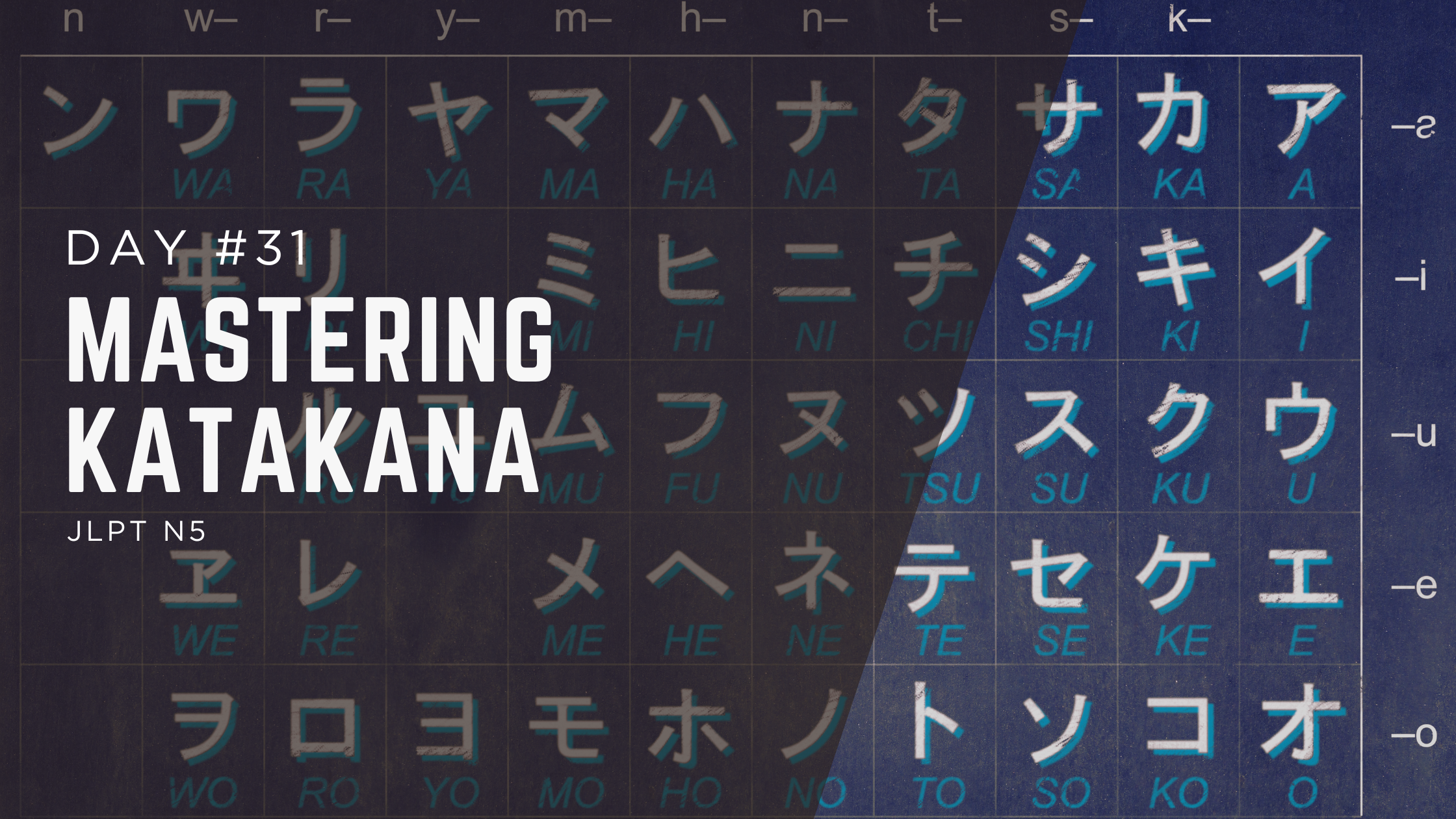Welcome to Day 30 of our 100-Day JLPT N5 Challenge!
Today, we’re tackling the versatile particle に (ni), which can mean “in,” “at,” “on,” or “to,” depending on the context.
This particle is essential for describing locations, times, and destinations, making your Japanese sound natural and confident. Let’s dive into this beginner-friendly lesson with clear examples and keep pushing toward fluency!
Main Lesson: Understanding the Particle に (Ni)
The particle に (ni) is a key grammar point for JLPT N5, with meanings that shift based on context.
We’ll cover its four main uses: place of existence, specific time, location on a surface, and destination.
Let’s get started!
1. に (Ni) – Place of Existence
に marks where something or someone exists, often translated as “in” or “at.” It’s used with verbs like います (imasu – to exist for living things) or あります (arimasu – to exist for objects).
Basic Structure: [Place] + に + [Existence Verb]
| Example (Hiragana) | Romaji | English Translation |
|---|---|---|
| にわ に ねこ が います。 | niwa ni neko ga imasu | There’s a cat in the garden. |
| ほんや に まんが が あります。 | honya ni manga ga arimasu | There’s a manga in the bookstore. |
- にわ:niwa (garden / yard)
- ねこ:neko (cat)
- ほんや:honya (bookstore)
- まんが:manga
2. に (Ni) – Specific Time
に indicates a precise time when an action occurs, similar to “at” in English. It’s used with specific times, like hours or days.
Basic Structure: [Time] + に + [Action Verb]
| Example (Hiragana) | Romaji | English Translation |
|---|---|---|
| ごご ろくじ に たべます。 | gogo rokuji ni tabemasu | I eat at 6 p.m. |
| どようび に ともだち に あいます。 | doyoubi ni tomodachi ni aimasu | I meet a friend on Saturday. |
- ごご:gogo (afternoon / p.m.)
- ろくじ:roku-ji (6 o’clock)
- たべる:taberu (to eat)
- たべます:tabemasu (the polite way of “たべる”)
- どようび:doyoubi (Saturday)
- ともだち:tomodachi (friend)
- あう:au (to meet)
- あいます:aimasu (the polite way of “あう”)
3. に (Ni) – Location on a Surface
に marks where something is located on a surface, often translated as “on.” It’s used with verbs like あります (arimasu) or います (imasu).
Basic Structure: [Surface] + に + [Existence Verb]
| Example (Hiragana) | Romaji | English Translation |
|---|---|---|
| つくえ の うえ に りんご が あります。 | tsukue no ue ni ringo ga arimasu | There’s an apple on the desk. |
| かべ に しゃしん が あります。 | kabe ni shashin ga arimasu | There’s a photo on the wall. |
- つくえ:tsukue (desk)
- うえ:ue (above / surface / on)
- りんご:ringo (apple)
- かべ:kabe (wall)
- しゃしん:shashin (photo)
4. に (Ni) – Destination
に shows the destination of movement, like “to” in English. It’s used with verbs like いきます (ikimasu – to go) or かえります (kaerimasu – to return).
Basic Structure: [Destination] + に + [Movement Verb]
| Example (Hiragana) | Romaji | English Translation |
|---|---|---|
| えき に いきます。 | eki ni ikimasu | I go to the station. |
| うみ に あそび に いきます。 | umi ni asobi ni ikimasu | I go to the sea/beach to play. |
- えき:eki (station)
- いく:iku (go)
- いきます:ikimasu (the polite way of “いく”)
- うみ:umi (sea / ocean)
- あそぶ:asobu (to play)
- あそび:asobi (the noun of “play”)
※In Japanese, when people say “うみ に いく” (literally “go to the sea”), they usually mean “go to the beach.”
Practice Section
Let’s make に stick with these interactive exercises!
JLPT N5 Particle に Quiz – Day 29
1. にわ に ねこ が います。 (niwa ni neko ga imasu)
2. ごご ろくじ に たべます。 (gogo rokuji ni tabemasu)
3. つくえ の うえ に りんご が あります。 (tsukue no ue ni ringo ga arimasu)
4. えき に いきます。 (eki ni ikimasu)
5. Choose the correct Japanese sentence for: “There’s a manga in the bookstore.”
6. Choose the correct Japanese sentence for: “I meet a friend on Sunday.”
7. Choose the correct Japanese sentence for: “There’s a pencil on the desk.”
8. Choose the correct Japanese sentence for: “I go to school.”
Common Mistakes
English speakers often misuse に. Here’s how to avoid common pitfalls:
Confusing に with で for actions: Use に for existence or destinations, not actions. For actions, use で (e.g., “こうえん で あそびます” – kouen de asobimasu).
- Wrong: こうえん に あそびます。
- Correct: こうえん で あそびます。
- Correct: こうへん に いきます。
Conclusion
Today, you mastered the particle に for describing places, times, and destinations—a vital skill for JLPT N5 and everyday Japanese. Keep practicing to make it second nature. Tomorrow, join us for Day 31: Mastering Katakana.
Subscribe for daily updates, share this lesson, and let’s keep learning Japanese together!



